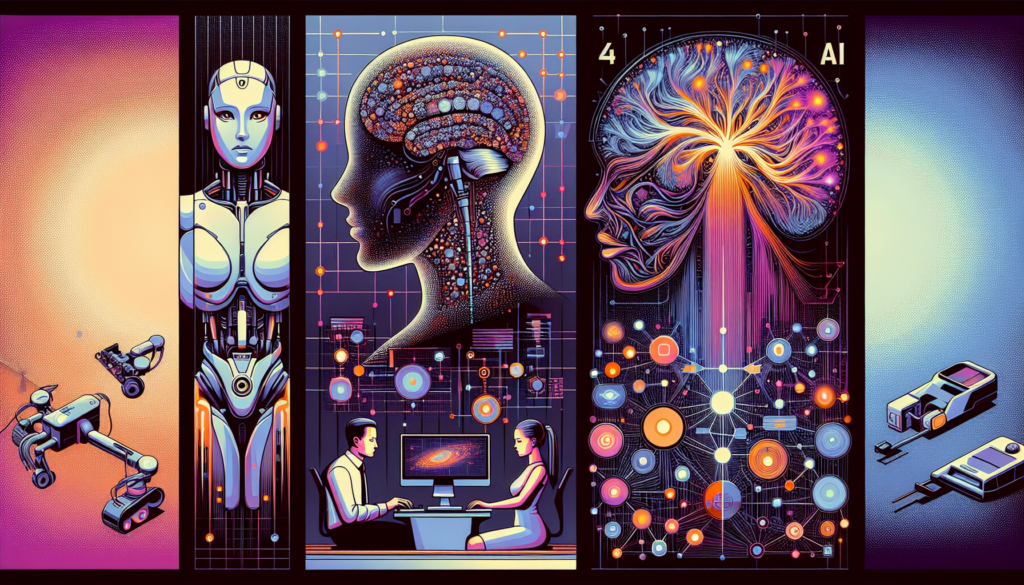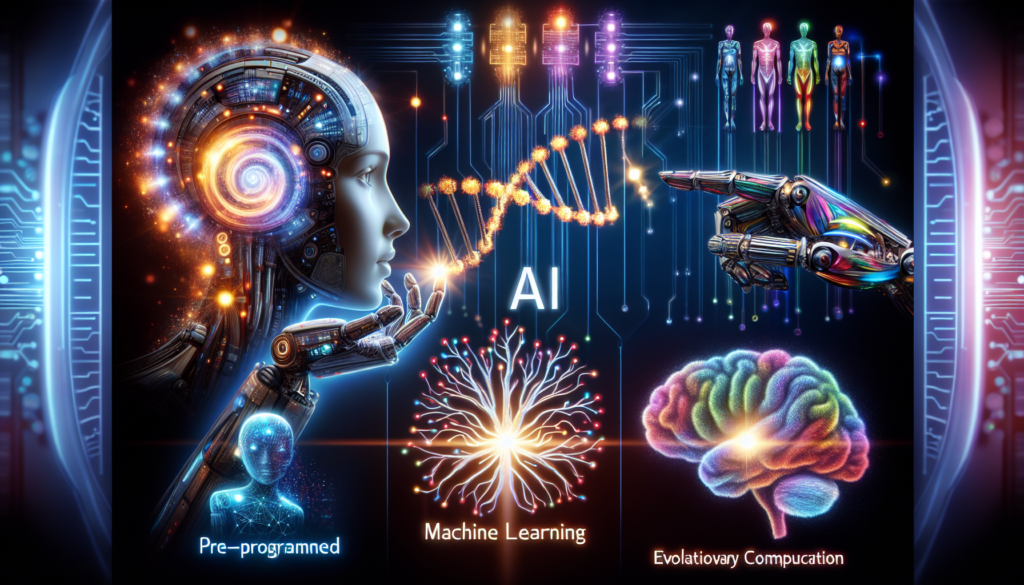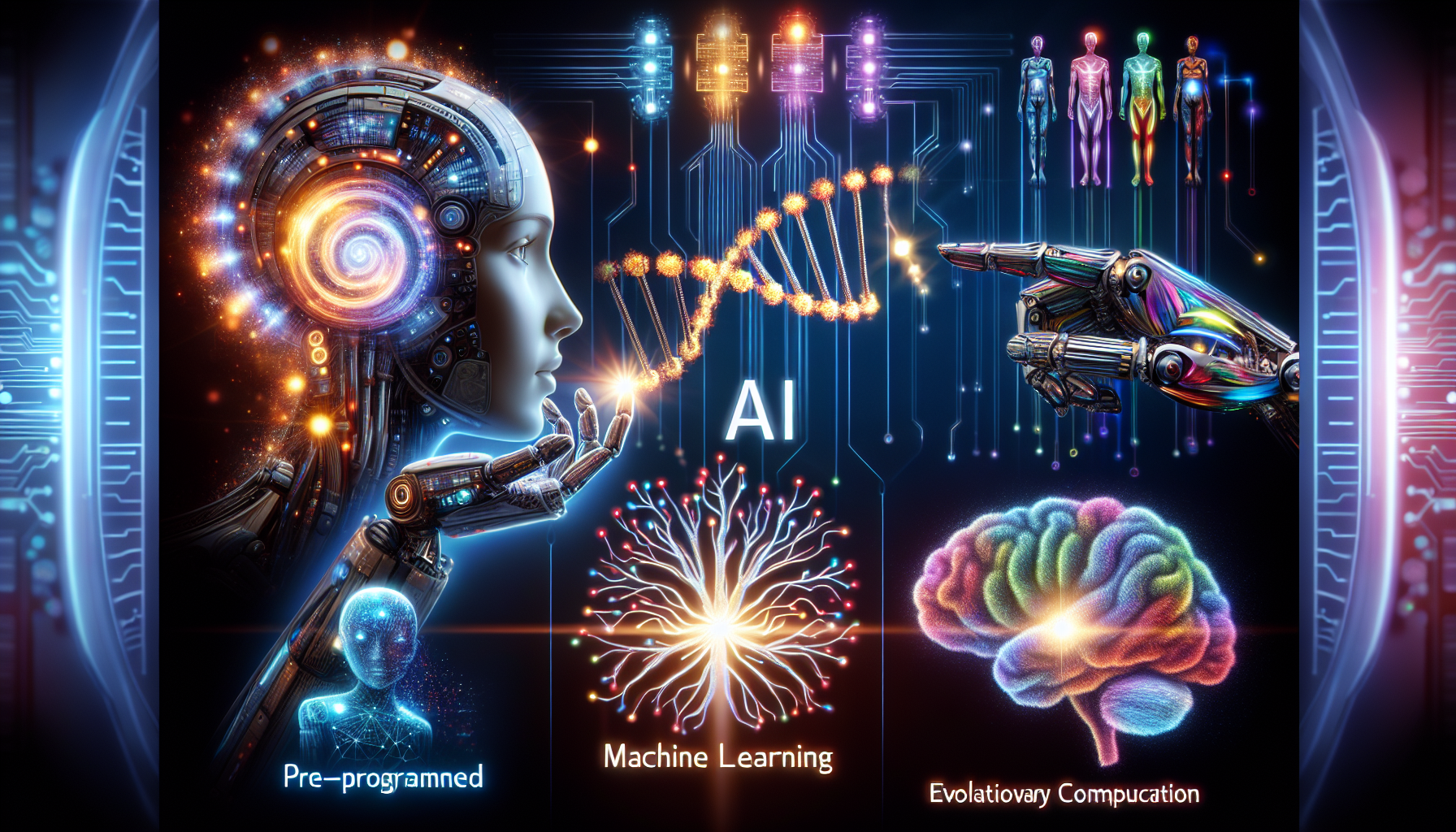Whether you realize it or not, artificial intelligence (AI) has become an integral part of our everyday lives. From voice assistants like Siri and Alexa to personalized recommendations on shopping platforms, AI is all around us. But have you ever wondered what exactly AI is and how it works? In this article, we will explore the four different types of AI examples to help you gain a better understanding of this fascinating technology. So, buckle up and get ready to embark on a journey through the world of artificial intelligence!

Introduction to AI
Artificial Intelligence (AI) is a fascinating and rapidly advancing field that has the potential to revolutionize various aspects of our lives. In simple terms, AI refers to the creation of intelligent machines that can perform tasks or make decisions that typically require human intelligence. These machines are designed to analyze vast amounts of data, learn from it, and use that knowledge to make predictions, solve problems, and even interact with humans.
Definition of AI
AI can be defined as the simulation of human intelligence in machines that are programmed to think like humans and mimic their actions. It involves various techniques, including machine learning, natural language processing, computer vision, and robotics, among others. The goal of AI is to enable machines to perform complex tasks that normally require human intelligence, such as understanding spoken language, recognizing objects, and making decisions based on patterns and data.
Evolution of AI
The field of AI has come a long way since its inception. It traces its roots back to the 1950s when the term “artificial intelligence” was first coined. Initially, AI was focused on developing systems that could perform tasks such as playing games or proving mathematical theorems. However, over the decades, advancements in technology and computing power have accelerated the development of AI.
One major milestone in the evolution of AI was the development of machine learning algorithms in the 1990s. These algorithms allowed machines to learn from data and improve their performance over time. This marked a shift towards more practical applications of AI, such as speech recognition, image classification, and recommendation systems.
In recent years, AI has seen remarkable progress, thanks to advancements in deep learning, a subfield of machine learning that focuses on training artificial neural networks to recognize patterns and make predictions. This has led to breakthroughs in areas such as computer vision, natural language processing, and autonomous vehicles.
Importance of AI
The importance of AI in today’s world cannot be overstated. AI has the potential to enhance productivity, improve decision-making, and solve complex problems in almost every industry. It has already started to revolutionize various sectors, including healthcare, finance, transportation, education, and entertainment.
One of the key benefits of AI is its ability to analyze massive amounts of data and extract meaningful insights. By processing and interpreting data from diverse sources, AI-powered systems can identify patterns, detect anomalies, and provide valuable recommendations. This can lead to more informed decision-making and ultimately drive innovation and efficiency.
AI also has the potential to improve our everyday lives by enabling personalized experiences and automating routine tasks. From virtual assistants that can understand and respond to our voice commands to smart home devices that can adjust the temperature based on our preferences, AI is making our lives more convenient and enjoyable.

Types of AI
There are four broad types of AI, each with its own capabilities and limitations. These types are based on the level of autonomy and the ability to understand and interpret the world.
Type 1: Reactive Machines
Reactive Machines, as the name suggests, are purely reactive and do not have any memory or ability to learn from past experiences. These machines can only react to current inputs based on predefined rules and patterns.
Characteristics of Reactive Machines
Reactive Machines excel in processing and reacting to real-time information. They can make decisions or take actions quickly and accurately, but they lack the ability to understand context or learn from past events. This means that their behavior is limited to the present moment and does not take into account any historical data.
Examples of Reactive Machines
One prominent example of a Reactive Machine is Deep Blue, the chess-playing computer developed by IBM. Deep Blue was designed to analyze millions of possible moves and calculate the best move to make in each situation. It was capable of defeating world chess champion Garry Kasparov in a highly publicized match in 1997.
Type 2: Limited Memory
Limited Memory AI systems are capable of retaining and using past experiences to influence their decision-making process. Unlike Reactive Machines, they can learn from historical data and adapt their behavior accordingly.
Characteristics of Limited Memory AI
Limited Memory AI systems can store and recall specific information from the past, which allows them to make more informed decisions. They can use this stored information to recognize patterns, predict outcomes, and adjust their behavior based on previous experiences. However, their learning is limited to specific tasks and does not generalize to new situations.
Examples of Limited Memory AI
A common example of Limited Memory AI is a self-driving car. These vehicles are equipped with sensors and cameras that collect data about the surrounding environment. By analyzing this data and learning from past experiences, self-driving cars can navigate traffic, avoid obstacles, and make informed decisions on the road.
Type 3: Theory of Mind
Theory of Mind AI refers to machines that not only understand the world and learn from it but also have the ability to understand and simulate human emotions, beliefs, and intentions. This type of AI is capable of inferring mental states and understanding the perspectives of others.
Characteristics of Theory of Mind AI
Theory of Mind AI systems can comprehend the emotions and intentions of humans, enabling them to interact and communicate more effectively. They can anticipate human behavior and respond appropriately, taking into account factors such as emotions, beliefs, and social norms. This type of AI is still in the early stages of development and has limited practical applications.
Examples of Theory of Mind AI
While Theory of Mind AI is still a developing field, advancements have been made in areas such as chatbots and virtual assistants. These AI systems are designed to understand and respond to human emotions, providing personalized and empathetic interactions.
Type 4: Self-aware AI
Self-aware AI represents the highest level of AI, where machines have a sense of self and consciousness. These AI systems not only understand the world and human emotions but also possess self-awareness and a subjective experience of themselves.
Characteristics of Self-aware AI
Self-aware AI systems have a deep understanding of their own capabilities, limitations, and state of being. They possess a sense of self and can reflect on their actions and experiences. This level of AI is purely speculative at the moment and does not exist in practical terms.
Examples of Self-aware AI
While Self-aware AI only exists in science fiction for now, it is a topic of much debate and speculation in the AI community. Movies such as “The Terminator” and “Ex Machina” explore the concept of self-aware AI and the ethical dilemmas it presents.
Applications of AI
AI has numerous applications across various industries, and its potential is still being explored. Some notable applications of AI include:
AI in Healthcare
AI is revolutionizing healthcare by enabling early disease detection, personalized treatment plans, and improved patient care. AI-powered systems can analyze medical records, diagnose diseases, and assist in surgical procedures. They can also provide real-time monitoring of patients, alerting healthcare providers to any abnormalities or changes in vital signs.
AI in Finance
The finance industry is leveraging AI to automate routine tasks, detect fraud, and provide personalized financial advice. AI algorithms can analyze vast amounts of financial data, identify patterns, and make predictions. This enables financial institutions to make informed investment decisions, manage risks, and improve customer experiences.
AI in Transportation
AI is driving innovation in the transportation industry through the development of autonomous vehicles and intelligent traffic management systems. Self-driving cars, trucks, and drones are being developed to improve road safety, reduce traffic congestion, and optimize fuel efficiency. AI-powered navigation systems also provide real-time traffic updates and suggest the most efficient routes.
AI in Education
AI is transforming education by personalizing learning experiences and improving student outcomes. Intelligent tutoring systems can adapt to individual learning styles and provide targeted feedback and support. AI-powered chatbots and virtual assistants are also being used to enhance student engagement and provide 24/7 support.
AI in Entertainment
AI is enhancing the entertainment industry through the creation of realistic virtual characters, personalized recommendations, and immersive gaming experiences. AI algorithms can analyze user preferences, behavior, and feedback to provide personalized content suggestions. Virtual reality and augmented reality technologies are also being integrated with AI to create interactive and engaging experiences.
Impact of AI on Society
The widespread adoption of AI is bound to have a significant impact on society, both positive and negative. It is important to consider the ethical implications and ensure that AI is developed and deployed responsibly.
Positive Impact of AI
AI has the potential to improve productivity, enhance decision-making, and solve complex problems. It can streamline processes, automate routine tasks, and free up human resources to focus on more creative and strategic endeavors. AI-powered systems can also provide personalized experiences, improve healthcare outcomes, and enable advancements in various fields.
Negative Impact of AI
Despite its numerous benefits, AI also raises concerns regarding job displacement, privacy, and biases. The automation of certain tasks may lead to job losses in certain sectors, requiring a shift in the workforce and the need for upskilling and reskilling. Additionally, AI systems rely on vast amounts of data, raising concerns about privacy and data security. Biases in AI algorithms can also perpetuate existing inequalities and discrimination if not carefully addressed.
Ethical Considerations
As AI becomes more advanced and autonomous, ethical considerations become crucial. There is a need to establish ethical frameworks and regulations to ensure that AI systems are developed and used responsibly. Transparency, accountability, and fairness should be at the forefront of AI development to mitigate potential risks and ensure that AI benefits society as a whole.
Future of AI
The future of AI is promising and exciting. As technology continues to advance, AI systems will become more sophisticated and capable. We can expect AI to play an even greater role in various industries, driving innovation, improving decision-making, and enhancing our everyday lives. However, it is important to continue exploring the ethical implications and ensure that AI is harnessed for the benefit of humanity.
Conclusion
Artificial Intelligence is a rapidly evolving field that has the potential to transform various aspects of our lives. From Reactive Machines that react to real-time information to Self-aware AI that possesses consciousness, the different types of AI offer unique capabilities and possibilities. The applications of AI in healthcare, finance, transportation, education, and entertainment are already revolutionizing these industries and improving outcomes. However, the impact of AI on society is not without its challenges and ethical considerations. As we continue to advance in AI, it is essential to navigate these challenges responsibly and ensure that AI is developed and deployed in a way that benefits all of humanity.
